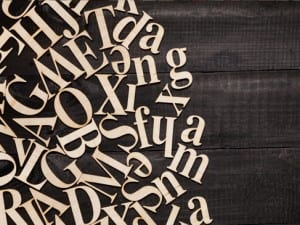The Aesthetica Art Prize is a celebration of emerging and established artists from across the world. From Photographic & Digital Art and Painting, Drawing & Mixed Media, to Three-Dimensional Design & Sculpture and Video, Installation & Performance, the works included in this year’s exhibition come from locations such as Australia, Germany, Lithuania, Norway, Singapore, the UK and the USA. From global financial systems to technology that replicates nature, the subject matter holds innovation at its core, defining a new vocabulary for life in the 21st century.
Reginald Van de Velde, Memento Mori series, 2015 – present (www.suspiciousminds.com)
In a constantly developing world, Reginald Van de Velde’s photographs provide an oasis for reflection on the passage of time, offering a new perspective on previously abandoned settings. With information being constantly recorded and disseminated, dilapidated buildings become a haven for the contemporary audience – locations and dates are lost to colossal monuments and overgrown nature. Memento Mori is a reminder; it is a story about both the fragility of life and the delicate nature of our memories.
David Birkin, Profiles, 2012 / 2018 (www.davidbirkin.net)
Profiles addresses the relationship between spectacle and loss, specifically in the representation of civilian casualties from the Iraq War. In collaboration with the NGO Iraq Body Count, identification numbers from a casualty database were inserted into photographic software to generate a chromatic “value” for each person. These colours were exposed onto 8 x 10-inch transparencies and displayed on X-ray light boxes. The portraits point to blind spots in the record, reflecting on omissions and redactions.
Jiayu Liu, Ocean Wave, 2017 (www.jiayuliu.studio)
Jiayu Liu is interested in the dialogues between humans and nature; she highlights the various ways in which society observes the organic world. Ocean Wave is one such example; the interdisciplinary artwork offers nothing in the way of instruction or introduction, instead provoking behavioural responses in audiences. The work combines an overlay of images from a short 3-8 second loop, visualising a wave through live data, posing questions about emotive responses and whether they can be replicated.
Jukhee Kwon, Babel Library, 2014 / 2018 (www.fromthebooktothespace.blogspot.com)
Babel Library is made from various editions of Encyclopaedia Britannica that have been discarded. Kwon has collected them and, by hand, cut away each page, line by line, with a knife and scissors. However, as the pages are still connected to the book spine, they cascade like a waterfall. Not only does this create an aesthetic experience but it allows the viewer to emotionally connect with the history of print. As audiences move further into the digital age, Babel Library reminds us of our collective past.
Shauna Frischkorn, McWorkers series, 2014 – present (www.shaunafrischkorn.com)
Fast-food-industry workers serve millions of people daily wearing recognisable corporate uniforms that reflect the conformity associated with low-status “McJobs.” Unattractive and ill-fitting, these clothes serve their purpose: to make the workers look anonymous. Though the importance of these individuals is foregrounded, the compositions are deeply complex, measuring the accountability of fast-food behemoths on a variety of issues including landfill waste and global health.
Noémi Varga, The Happiest Barrack, 2017( www.cargocollective.com/noemivarga)
Noémi Varga’s work is concerned with pushing the boundaries of documentary filmmaking through applying the tools of cinematic storytelling. She is particularly interested in the representation of memory and history. This is illustrated in her most recent short, The Happiest Barrack, which considers her maternal grandmother’s life in Soviet-era Hungary. The documentary element is presented through the audio, married to deeply emotive visuals that add universal layers to a very personal story.
Kenji Ouellet, I Am One, 2016 (www.kenjiouellet.net)
I Am One comprises a collection of quotes about individuality, from celebrities and unknown figures. Each phrase is heard over scenes of densely populated cities; urban architecture is shown as part of anonymous landscapes. The film is, amongst other interpretations, a retelling of collective and individual perspectives on singularity. In today’s world – dominated by globalisation and life online – cities have become the locations in which most of the population live, yet, in this film, they become part of a replicable, indiscernible tapestry.
Electra Lyhne-Gold, Lost in Translation, 2017 (www.electralyhnegold.com)
Electra Lyhne-Gold is inspired by the power of cinema. She experiments with the camera by staging herself in surreal, fictional narratives, inhabiting various personas. She explores how the viewer interacts with figures presented in films, and the levels of emotional response evoked by concepts that are at once familiar and distant. Lyhne-Gold reimagines the languages of everyday life, which, once recorded and manipulated through layers of rehearsal and mimicry, become fragmented. Lost In Translation considers advertising and commerce from a social, economic and personal point of view.
Peter Davis, Zeitgeist series, 2017 (www.peterdavisartist.com)
Both works taken from Zeitgeist consider the implications of technology on the lives of individuals. The body of work can be read as a social documentary that considers the digital epoch and the shifting status of the human condition in society. Cardboard Reality 1, for example, looks at the emergence of virtual reality and the connections it has with actual reality. In the painting’s composition there is a deliberate dichotomy between the inviting expression of the young woman and the blank surrounding emotionless environment.
Lisa Chang Lee, Laughter Project, 2017 / 2018 (www.lisachanglee.com)
Laughter Project is an interactive sound device which looks at the complex social and psychological effects of laughter. Extracted from its original context, the sound of laughing is captured and recreated by a computer so it will react to the viewer. In the process, it becomes obscured, ambiguous and somehow disturbing. Using the laugh as a symbol of entertainment, Lee examines the difference between manufactured and real emotions, questioning the dominance of entertainment culture in an age of anxiety. Lee is fascinated by the way we interact with the external world, and how this is reflected in our imagination.
Laura Woodward, Web (Encore), 2018 (www.laurawoodward.com.au)
Web (Encore) was developed from a series of earlier works, presenting a self-regulating and selfcontained system. It creates a stark contrast between inherent – and necessary – inflexibility, as well as the potential for fluidity, variability and material agency within structural confines. Woodward’s work is often powered by water, highlighting the intersection between materials, movement and time. The piece considers how each individual part sits within the wider framework – the larger structure both relies upon and provides a place for every component.
Fabio Lattanzi Antinori, Fortune Tellers, 2016 / 2018 (www.lattanziantinori.com)
With a research-based process, Fabio Lattanzi Antinori uses coded surfaces and data-informed structures to negotiate wider information systems. Fortune Tellers incorporates forecasts of the Shanghai Stock Exchange – provided by data analysts and a financial astrologer – translated into musical notes that can be activated by the public. Traversing sculpture and installation, the work is led by information from the last 10 financial years, the data presented as harmonies performed by three Chinese sopranos.
The Aesthetica Art Prize Exhibition runs 18 May – 30 September at York Art Gallery. For more information, click here.
To find out more about this year’s complete longlist, click here.
Credits:
1.Jiayu Liu, Ocean Wave, 2017.
2. Reginald Van de Velde, Memento Mori series.
3. Noémi Varga, The Happiest Barrack, 2017.




